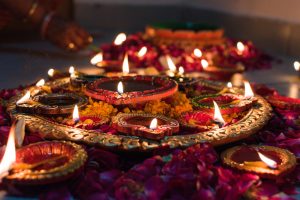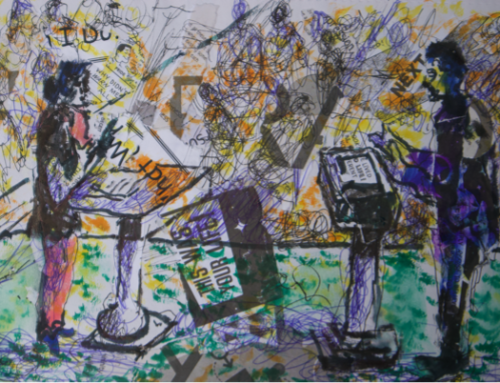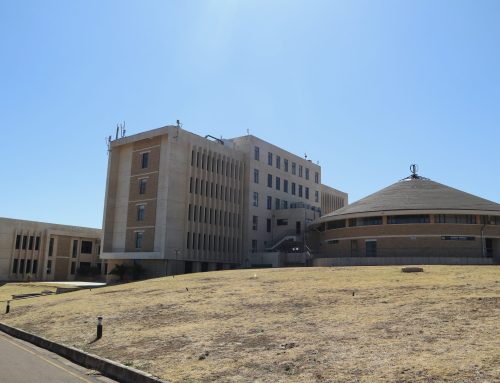Dr Jastinder Kaur reflects on the politics of, and communication around, ethnicity and religion during Diwali in Fiji. Fiji is post-colonial archipelago in the South Pacific comprising indigenous Fijians and descendants of Indo-Fijian indentured labourers (as well as other ethno-cultural groups) where Diwali has been a public holiday since 1974. The country has also experienced four coups in just two decades, which have provided flashpoints for long simmering ethnopolitical tension between indigenous Fijians and Indo-Fijians. In this article, Dr Kaur draws on a politician’s social media post and its fallout to explore how those tensions can so easily be reignited and threaten to chase the light of Diwali away and a festival of hope and renewal that is celebrated and beloved by so many of Fiji’s peoples across all faiths and ethnicities.

As Hindus around the world celebrated Diwali those in Fiji were warned against marking the occasion on Sunday 15thNovember. As anybody faintly acquainted with the occasion knows, Diwali is a time for visiting friends and family, sharing sweetmeats, adorning houses with divas, and setting off fireworks – on the evening of the day, and often across the weekend which is when families and friends can most easily meet and mingle. However, the Hon. Lynda Tabuya, an Opposition MP in Fiji, took to Facebook last week advising Hindus to desist from Sunday celebrations because it is a day of worship, rest, reverence, and reflection for the country’s majority Christians, who also happen to be indigenous Fijians. Hon. Tabuya’s call for Hindus to ‘do the right thing’ erupted in a social media furore, with aggrieved citizens sharing screenshots of her Facebook post on Twitter. One witty response included people tweeting and sharing a picture of the MP attending a Fiji rugby match on a Sunday during the Hong Kong 7s. Notwithstanding the singular importance of rugby in Fiji and indeed the wider Pacific region (some suggest the cocoa pod in the lion’s mouth that is on the flag should really be a rugby ball), the picture implies at best hypocrisy on the MP’s part and at worst an ethnic attack on Indo-Fijians that relegates their rights and status within Fiji. Tabuya was compelled to withdraw her Facebook post, though not before the secretary of communications for Fiji’s Methodist Church endorsed her stance (since retracted) and she herself claimed that her snapshotted post was taken out of context. It is unclear what context the Hon. Tabuya would like her comments to be seen in but judging from social media exchanges amongst the country’s indigenous Fijians and Indo-Fijians the incident revitalised a historic and unresolved debate about status, rights, and belonging in the South Pacific archipelago that has been punctuated by ethnic coups over the last three decades.
Those who would like to foreclose discussion about Tabuya’s comment as a purely religious one that merely asks for consideration from adherents of one religion towards those of another are well-reminded of Fiji historian Brij Lal’s observation that the father of independent Fiji, late paramount chief Ratu Kamisese Mara, was fond of saying that race is a fact of life in the country. On one level this may be read as a description of reality: giving utterance to that which simply is. On another level, and as borne out by continuing struggles between ethnic and civic conceptions of the state, Ratu Mara’s comment has an aura of a declaration, that is, that there is a sense in which ethnicity is and must be foundational to the way in which Fiji is structured, organised, and experienced. And this sentiment continues to circulate today, some three to four decades later. In 2012, Ratu Mara’s sister-in-law the Hon. Ro Teimumu Kepa wrote a letter scolding the incumbent Prime Minister for trying to stage a revolution against the reality of ethnicity in Fiji. Both Ro Kepa and Tabuya are members of the SODELPA party, whose political heritage reaches back across a series of parties (SDL and SVT) and decades to the Alliance Party. Alliance was a chiefly Fijian led party which came into existence a few years prior to Fiji’s independence and governed the country (with Ratu Mara as Prime Minister) between 1970 and 1987. Its Opposition was the National Federation Party (NFP), whose origins lay in representing the grievances of the post-indentured Indo-Fijian sugarcane farming community against the Australian Sugar Company.
Fiji’s political party system is framed by, and rooted in, ethnic pluralism. Its constitutions and electoral systems have until 2013 involved greater and lesser degrees of ethnic separation and hierarchy – most notably in the form of communal roll voting. But the ethnopolitical landscape in Fiji, much like elsewhere in the world, is not about ethnic identity, rather it is the mobilisation of ethnicity as part of a discourse of security which enmeshes groups in relations of conflict and power. Securitisation in this context is not merely physical and material – to do with borders, territories, access to resources – but is symbolic, cultural, and ultimately turns on the question of existence. Indo-Fijians, so the argument goes, have another place they can call home and where they can start life anew: India. Indeed, there has been an uptick in indenture research amongst descendants and consulting the archives to trace people’s original ancestral villages and communities. To be a girmitya(self-designated name for Fiji’s Indian indentured labourers)descendant is to share in inter-generational feelings of pain and loss, as noted by Fiji Indo-Fijian feminist and youth leader, Roshika Deo: first in the course of crossing the kala pani on the way to Fiji which had the effect of eviscerating one’s caste and cultural identity; then in the narak(hell) of the indenture system itself; followed by continual refusal by many factions to be allowed to say, alongside indigenous Fijians, ‘Fiji is our home too’.
Taken to the extreme, in the indigenous Fijian imaginary Indo-Fijians constitute a threat to the fabric of their existence. This threat can best be understood in relation to the (modern) tripartite basis of indigenous Fijian identity represented by, and embodied in, lotu, matanitu, vanua(church, chiefs, land). The church is indexical of one’s relationship to God but it also governs and permeates everyday life and activity in rural village settings. Chiefs represent governance, one that is authoritative but also representative of, and responsive to, the needs of the people. Land maps what might be thought of as a concentric set of circles of kinship, widening out from the family, to include the mataqali, province, confederacy, and eventually to include all indigenous Fijians. It inscribes indigenous Fijians in hierarchical and reciprocal relationships across space, providing them with a set of coordinates that codify appropriate behaviour and relationship between any two indigenous Fijians. But land is also materially and physically critical in indigenous Fijian myth origins and of course as a source of economic activity. Together, lotu, matanitu, and vanuacohere to provide the pillars not only of indigenous Fijian identity but what it means to live in the way of the land (vakavanua). Set against this cosmological unity, the Indian threat is clear to see: they profess a different religion; have long clamoured for equitable political representation and even common roll voting; and have grown economically wealthy through their leasing of indigenous Fijian land for sugarcane farming, the rents for which are distributed within the land-owning units following a hierarchical structure that those at the bottom see very little of.
Coups in 1987 and 2000, though deemed unfortunate by many indigenous Fijians, were also regarded as morally imperative. Interpreted as acts of survival against the theft of (chiefly) Fijian political dominance in the elections that preceded them, their significance included but also went beyond recapturing the state. The 1987 coup was followed by a decade of indigenous Fijian political dominance (though the coup leader’s new party and successor to the Alliance had to rely on Indo-Fijian support in parliament), the declaration of Fiji as a Christian state, affirmative action policies aimed at educational and economic empowerment of ethnic Fijians, large scale Indo-Fijian emigration, and an overall sense of contentment amongst indigenous Fijians. By 1997 a new constitution reversed key provisions of the 1990 constitution, increasing the number of common roll voting seats that allowed people to vote for candidates in urban areas regardless of their ethnic group membership, and withdrawing ethnic restrictions on high level political posts among other things. The swing towards multiethnicity was unanticipated and broadly opposed by indigenous Fijians. This did not stop the Fiji Labour Party from winning the 1999 election just as it had in 1987, with the added feature that Fiji got its first non-indigenous Prime Minister. FLP (which, parsed using ethnopolitical frames of reference, is characterised as an Indo-Fijian political party). In reality, its supporter base was multi-ethnic, urban, and working class; but it lives in the socio-political imaginary as an Indo-Fijian party, and that will likely never change. One year on from its victory, FLP was haemorrhaging support – the Prime Minister was a caricature of the adversarial trade unionist, and even his Indo-Fijian colleagues found him abrasive and uncooperative. He also confronted the issue of expiring land leases in his trademark forthright fashion: Indo-Fijian land leases were expiring, and indigenous Fijian landowning units were evicting their tenants summarily, angered by the Indo-Fijians’ economic dominance through decades of sugarcane farming on the basis that this would have been impossible without the vital resource of Fijian land, and for which the landowning units received meagre rents (administered by the Native Land Trust Board, an indigenous Fijian institution). Rumours of PM Chaudhry’s overthrow were circulating almost immediately after he took office and took place a year later, the motto of the coup being to complete the unfinished business of 1987. Indigenous Fijians swarmed into the parliamentary complex that had been erected and used since the first coup, away from the art deco colonial building in the heart of downtown Suva and built on the model of a Fijian bure(house). A human cordon comprising young Fijian men prevented the army from storming the complex and freeing the government members held hostage there for 56 days.
But successive coups in 1987 and 2000, and the years of indigenous Fijian political dominance that followed them, did not resolve the spectre of Fijian-Indian conflict that has hung over the country and its peoples since the beginning of the twentieth century. Nor did an attempt to form a multi-ethnic Cabinet in the 2000s. Why? I think it was Pacific and Indo-Fijian historian Brij Lal who articulated one reason for this when he shared the following experience: at a political rally a Fijian politician approached him saying effectively ‘no hard feelings, it isn’t personal’ after having whipped up ethnic sentiment against Indo-Fijians: which is to say that ethnicity makes for good politics. That said, much of Fiji’s ethnic tension is often painted as ideological – ethnic vs civic, indigenous vs immigrant – but I think that too is reductive in trying to understand the complexities of Fiji. Rather, what the fallout from Tabuya’s Facebook post urging (bullying?) Hindus to defer celebrations of one of the holiest and most hopeful in their cultural calendar revealed is this: that Fijian-Indian conflict is axiomatic of an ontological fear, of losing the frames of reference by which we come to know ourselves and who we are. Or to put it another way: that which lights our way and secures us safe passage through the world.
Yes, Indo-Fijians can leave Fiji – 90% of the 70,000 who emigrated after the 1987 coup were Indian (approximately 10% of Fiji’s population at the time, or the entire population of Suva). But their lives are entangled in the history of the country in ways that are as unique to their experience as those of indenture descendants in Guyana, Mauritius and Trinidad are to them. A transnational indentured community would not make the Indians in these countries feel any less Fijian, Guyanese, and so on. Also, it is unclear what percentage of Indo-Fijian emigrants comprised the sugarcane farming community and what percentage comprised descendants of free Indian settlers, predominantly Gujaratis who arrived for economic and commercial reasons and whose names are synonymous with Fiji’s well-known businesses and shopping empires. For indigenous Fijians, the encroachment of a people for whom there is no natural place within their social, cultural, political cosmology has been difficult to reconcile as has their lagging incorporation into Fiji’s economic life and modern development. Add to this the catastrophic effects of climate change, which threaten small island states disproportionately, and those in places like the Pacific doubly so, and anxiety of having no place to call home at all, and of being wiped out of existence, is understandable.
Recent revolutionary shifts in Fiji have not resolved indigenous Fijian fears. Nor could they: ever since the last of the coups, in 2006 – an ethnic coup like those before it, but remarkably one that arrested Fijian ethnopolitical power and hence one favoured by Indo-Fijians – yet another constitution has entered the fray, and the electoral system has been altered dramatically. All citizens now bear the name ‘Fijian’. The institution of the Great Council of Chiefs through whom the British exercised indirect power over inidgenous Fijians during colonialism, and who continued to govern indigenous sFijian affairs after independence, has been disbanded. The separation of state and religion has been enacted. People vote for parliamentary candidates from an open list in a single national constituency. Overall, the intended effect may be to create a multi-ethnic and inclusive nation; but it has concentrated people’s minds on what gets lost or suppressed as a result of equalising initiatives. Tabuya’s comments fed into this.
Tabuya insisted that Hindus revise their luni-solar calendar (by which Diwali falls on a different date each year) in order to prioritise the majority indigenous Fijian Christian population. Her religious chauvinism plays into and circulates along an older sedimented discourse of ethnic conflict and recalls older efforts to make Fiji a Christian state, in the mould of Israel as a Jewish state. On the eve of a celebration of light that many – beyond just Hindus – identify as a source of hope and goodness, Tabuya hid the diyas and plunged an entire community into the darkness of a time and memory that weaves itself painfully through the generations. Her own party colleagues, all indigenous Fijian, eventually rallied against her by posting photographs of themselves celebrating Diwali in multicultural fashion – which opens onto another set of interesting questions about how SODELPA is navigating between its core indigenous aspirations and supporter base while also parlaying the rhetoric of multiculturalism and ethnic inclusiveness. But perhaps the most startling and hopeful outcome of the entire incident has, for me at least, been the deluge of pictures circulating across social media platforms of everyday indigenous Fijians and Indo-Fijians alike enjoying Diwali celebrations, dressing up in saris and kurtas, smiling, laughing, and lighting the way for those who only ever seem to see Fiji in terms of ethnic conflict and never through the lens of conviviality and friendship. Happy Diwali.
Author’s note: My thanks to Roshika Deo and Abdul Mufeez Shaheed for being critical friends and providing comments and clarifications on a draft of this reflection piece. Dylan Kava expressed interest in reading a draft, but was unable to do so. In the spirit of ethical research and writing, and collaborative dialogue, it is vital to acknowledge and centre those whose experiences and lives we reflect on and share with wider audiences. My intention is not to displace or take over Pacific spaces and voices, but to be able to bring my own critical lens to bear as an anthropologist for whom issues of ethnicity, race, identity, and belonging have long been part of my own experience both as an Indian and a British person. At the same time, I am conscious that asking people in Fiji to provide feedback on my writings is an act of labour extraction that makes me deeply uneasy, so I hope to talanoa with people in Fiji about ways in which to move forward and find ways of engaging that are collaborative and inclusive.




